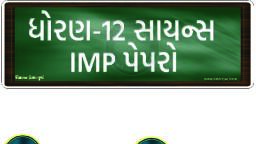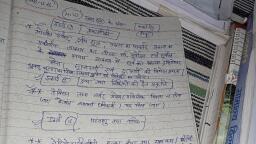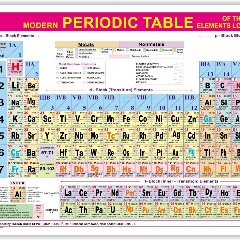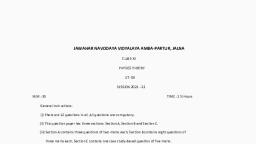Question 1 :
If we take 44g of${ CO }_{ 2 }$and 14g of${ N }_{ 2 }$ , what will be themole fraction of${ CO }_{ 2 }$in the mixture?
Question 3 :
The sum of mole fractions of solute and solvent of a solution is equal to:
Question 4 :
Which of the following are homogenous in nature ?<br>(i) Ice<br>(ii) Wood<br>(iii) Soil<br>(iv) Air
Question 5 :
The number of components in a binary solution are/is _______ .
Question 6 :
One kilogram of sea water sample contains $6\ mg$ of dissolved $O_{2}$. The concentration of $O_{2}$ in the sample in ppm is:
Question 7 :
$Y$ molal solution of a compound in benzene has mole fraction of solute equal to $0.2$. The value of ?
Question 8 :
An ideal gaseous mixture of ethane and ethene occupy $28L$ as STP. The mixture required $128g$ ${O}_{2}$ combustion, ,mole fraction of ethene in the mixture is:
Question 9 :
The mole fraction of solute in 10% (w/w) aqueous NaOH solution is:
Question 10 :
In a glass we are having half filled water. Then we are continuously adding salt to the water and salt is getting dissolved into water. But a state occur when water is not able to dissolve salt. Then the solution is called as<b></b>
Question 11 :
The mole fraction of solute in a solution is 0.3 . The mole percent of solvent is:
Question 12 :
The sum of mole fractions of solute and solvent of a solution is equal to:
Question 13 :
The mole fraction of water in 20% aqueous hydrogen peroxide solution is:
Question 14 :
Two liquids A and B have vapour pressures in the ratio $P^0_A : P^0_B=2 : 3 $ at a certain temperature. Assuming that A and B form an ideal solution and ratio of mole fractions of A and B in the vapour phase is 1 : 3 , then the mole fraction of A in the solution at the same temperature is :
Question 15 :
16.0 g of NaOH is present in 100 ml of an aqueous solution. Its density is 1.06 g/ml. Mole fraction of the solute is approximately:
Question 18 :
Oleum is considered as a solution of $SO_3$ in $H_2SO_4$. Which is obtained by passing $SO_3$ in solution of $H_2SO_4$.When 100 g sample of oleum is diluted with desired weight of $H_2O$ then the total mass of $H_2SO_4$.obtained after dilution is known as labelling of oleum. <br/><br/>For example , a oleum is diluted by 9 g of $H_2O$ which combined with all the free $SO_3$ to form $H_2SO_4$ as:<br/>$SO_3 +H_2O \rightarrow H_2SO_4$.<br/><br/>What is the % of free $SO_3$ in an oleum that is labelled as 104.5 % $H_2SO_4$?
Question 19 :
What is the mass percentage of carbon tetrachloride if $22 g$ of benzene is dissolved in $122$ $g$ of carbon tetrachloride? 
Question 20 :
What is the highest percentage yield of $N_{2}$ that can be expected? The theortical yield the quantity of $N_{2}$ formed in the absence of parallel reaction
Question 21 :
If $M$ is molecular weight of solvent, $K_b$ is molal elevation constant, $T_b$ is its boiling point, $p^o$ is its vapour pressure at temperature $T$ and $p_s$, is vapour pressure of its solution having a non-volatile solute at $T\ K$, then:
Question 23 :
Caffeine has a molecular weight of 194. If it contains $28.9\%$ by mass of nitrogen, the number of atoms of nitrogen in one molecule of caffeine is:
Question 25 :
A $0.5 g$ sample of $ KH_{2}PO_{4} $ is titrated with $0.1 M$ $NaOH$. The volume of base required to do this is $25.0 ml$ The reaction is represented as :<br/>$ H_{2}PO_{4} ^{-}+OH ^{-}\rightarrow HPO_{4}^{2-}+H_{2}O $.<br/>The percentage purity of $ KH_{2}PO_{4} $ is <br/>$(K = 39, P = 31 )$
Question 26 :
The vapour pressure of a solvent decreased by $10\ mm$ of $Hg$ when a non-volatile solute was addedto the solvent. The mole fraction of solute in thesolution is $0.2$. What would be the mole fractionof solvent if decrease in vapour pressure is $20\ mm$?
Question 27 :
Assertion: The percentage weight of a compound $A$ in a solution is given by,<br> $\; \; \; \; $ % $\displaystyle of \: A = \frac{Mass \:A}{Total \: mass \: of \: solution}\times 100$<br>$Because$
Reason: The mole fraction of a component $A$ is given by,<br> $\; \; \; \; $ $\displaystyle Mole \: fraction \: of \: A =\frac{Number of \: moles \: of \: A}{ Total \: number\: of \: moles \: of \: all \: components}$
Question 28 :
When 45 gm of a solute is added to 900 gm ofwater, its vapour pressure decreased from 30 mmto 24 mm. The mole fraction of thesolvent in the solution is :
Question 29 :
Equal weights of methane and oxygen are mixed in an empty container at $25^oC$. The fraction of the total pressure exerted by oxygen is:
Question 30 :
The total pressure or a mixture of oxygen and hydrogen is $1.0\ atm$. The mixture is ignited and the water is removed. The remaining gas is pure hydrogen and exerts a pressure of $0.40\ atm$when measured at the same values of $T$ and $V$ as the original mixture. What was thecomposition of the original mixture in mole per cent?<br>
Question 31 :
A student mixes $10.0\ mL$ of $0.10\ M\ AgNO_3$ with excess copper metal. The reaction should produce $0.107$ gram of silver; however, the student obtains a mass of $150$ grams of silver. Plausible explanations for this yield $>100$% might include :<br/>I. the student did not subtract the mass of the filter paper before recording results. <br/>II. the student did not thoroughly dry the sample before massing.<br/>III. the copper metal did not react completely.<br/>
Question 32 :
$14.2$ g ${Na}_{2}S{O}_{4}$ is present in ${10}^{2}$ kg water. Its concentration in ppm is:
Question 33 :
When $1.04 g$ of $BaCl_2$ is present in $105g$ of solution the concentration of solution is:
Question 34 :
One litre of a sample of hard water (d =$1$ g/mL) contains $136$ mg of $CaSO_{4}$ and $190$ mg of $MgCl_{2}$.What is the total hardness of water in terms of $CaCO_{3}$?
Question 35 :
The vapour pressure of a solvent decreased by 10 mm of mercury when a non-volatile solute was added to the solvent. The mole fraction of the solute in the solution is 0.2. What should be the mole fraction of the solvent, if the decrease in the vapour pressure is to be 20 mm of mercury?
Question 36 :
Mole fraction of solute present in an aqueous solution having molality equal to $2$ is:
Question 37 :
Assertion: Greater the mole fraction of a gas in gaseous mixture, greater is the pressure it exerts.
Reason: Pressure of gas is due to bombardment of gas molecules on the walls of the container.
Question 38 :
What volume of 0.05 $M - Ca (OH)_{2}$ solution is needed for complete conversion of 10 ml of $ 0.1 M - H_{3}PO_{4}$ into $ Ca(H_{2}PO_{4})_{2}?$
Question 39 :
Assertion: A solution is a homogeneous mixture of two or more chemically non-reacting substances
Reason: Solution is prepared by the combination of two same phases of matter.
Question 40 :
A mixture of ethanol and water contains $54\%$ water by mass. Calculate the mole fraction of ethanol in this solution.
Question 41 :
The mole fraction of the solute in the $12$ molal solution of $Na_2CO_3$ is :<br/>
Question 42 :
What is the degree of hardness of a sample of water containing $24\ mg$ of $MgSO_{4}$ (mol. mass $120$) per kg of water?
Question 43 :
A sample of pure $Cu (4.00\ g)$ heated in a stream of oxygen for some time, gains in weight with the formation of black oxide of copper $(CuO)$. The final mass is $4.90\ g$. What percent of copper remains unoxidzed? $(Cu=64)$
Question 44 :
The concentration of fluoride, lead, nitrate and iron in a water sample from an underground lake was found to be $1000\ ppb, 40\ ppb, 100\ ppm$ and $0.2\ ppm$, respectively. This water is unsuitable for drinking due to high concentration of :
Question 45 :
$1$ L sample of impure water containing sulphide ion is made ammonial and is titrated with $300$ mL of $0.1\ M$ $AgNO_3$ solution. Which of the following statements is/are correct about the above reaction?
Question 46 :
$100\ ml$ of an aqueous solution contains $6.0\times {10}^{21}$ solute molecules. The solution is diluted to $1$ lit. The number of solute molecules present in $10\ ml$ of the dilute solution is:
Question 47 :
The concentration of the same aqueous solution of glucose is determined by two students - Sawan and Gautam. Sawan reported the concentration as 20% (w/w) and Gautam reported the concentration as 25% (w/v). If both the concentration are correct, then the density of solution is _____________.
Question 48 :
1000 g aqueous solution of $CaCO_3$ contains 10 g of calcium carbonate. A concentration of the solution is:
Question 49 :
What is the mole fraction of glucose in $10$% w/w glucose solution?
Question 51 :
On adding solute to a solvent having vapour pressure $0.80 \,atm,$ vapour pressure reduces to $0.60 \,atm.$ Mole fraction of solute is:
Question 53 :
Mole fraction of $C_3H_5(OH)_3$ in a solution of 36 g of water and 46 g of glycerine is:
Question 55 :
When the solute is present in trace quantities the following expression is used:
Question 57 :
$36 \,g$ water and $828 \,g$ ethyl alcohol form an ideal solution. The mole fraction of water in it, is:
Question 58 :
When an ideal binary solution is in equilibrium with its vapour, molar ratio of the two components in the solution and in the vapour phases is
Question 59 :
When $1$ mole of a substance is present in $1$ L of the solution, it is known as :
Question 60 :
<p>$RH_{2}$ (ionexchange resin) can replace $Ca^{2+}$ ions in hard water as: $RH_{2}+ Ca^{2+} \rightarrowRCa +2H^{+}$.</p><p>If $1\: L$ of hard water afterpassingthrough $RH_{2}$ has $pH = 3$, then hardness in parts per million of $Ca^{2+}$is:</p>
Question 61 :
Maltose is converted to 'A' by Maltase. The mole fraction of 'A' in $10\%$ (w/w) aq. solution is approximately.
Question 62 :
A sample of drinking was found to be severely contaminated with chloroform, ${CHCl}_{3}$, supposed to be a carcinogen. The level of contamination was $15$ ppm (by mass). Express this in percent by mass.
Question 63 :
A sample of water has a hardness expressed as $77.5$ ppm $Ca^{2+}$. This sample is passed through an ion exchange column and $Ca^{2+}$ is replaced by $H^+$. Select correct statement(s).<br/>
Question 64 :
$500$ g of urea solution of mole fraction $0.2$ is diluted to $1500$ g. The mole fraction of solute in the diluted solution is:
Question 65 :
The ppm strength of $CO_2(g)$ volume by volume (mL of $CO_2$ per $10^6$ mL of air) is:
Question 66 :
$30\: mL$ of $CH_{3}OH (d = 0.8\: g/cm^{3})$ is mixed with $60\: mL$ of $C_{2}H_{5}OH (d= 0.92\: g/cm^{3})$ at $25 ^\circ C$ to form a solution of density $0.88\: g/cm^{ 3}$. Select the correct option.
Question 67 :
One litre of a sample of hard water contains $55.5$ mg of $CaCl_2$ and $4.75$ mg of $MgCl_2$. The total hardness in terms of ppm of $CaCO_3$ is :
Question 68 :
The expression relating mole fraction of solute $(\chi_2)$ and molarity (<b>M</b>) of the solution is (where <b>d</b> is the density of the solution in $g L^{-1}$ and $Mw_1$ and $Mw_2$ are the molar masses of solvent and solute, respectively) :
Question 69 :
Washing soda $(Na_2CO_3.10H_2O)$ is widely used in softening of hard water. If $1$ L of hard water requires $0.0286$ g of washing soda, the hardness of $CaCO_3$ in ppm is :
Question 70 :
Mole fraction of the solute in a 1.00 molal aqueous solution is :
Question 71 :
What is the mole fraction of the solute in a $1.00$ m aqueous solution?
Question 72 :
$2.0\ g$ mixture of sodium carbonate and sodium bicarbonate on heating to constant weight gave $224\ mL$ of $CO_{2}$ at N.T.P.<br>The $\%$ weight of sodium bicarbonate in the mixture is:
Question 73 :
<blockquote>Amount in g of simple containing 80% NaOH required to prepare 60 litre of 0.5 M solution is :</blockquote>
Question 74 :
When $0.575 \times 10^{-2} kg$ of Glauber's salt ($Na_2SO_4\cdot 10 H_2O$) is dissolved in $3$ g water, we get $1$ $dm^3$ of a solution of density $1077.2 \:kg\: m^{-3}$. Calculate the molarity, molality and mole fraction of $Na_2SO_4$ in the solution:<br/>
Question 75 :
At $88^0 C$, benzene has a vapour pressure of 900 torr and toluene has a vapour pressure of 360 torr. What is the mole fraction of benzene in the mixture with toluene that will boil at $88^0 C$ at 1 atm pressure, benzene -toluene from an ideal solution?
Question 76 :
A sample of oleum is labelled as $112\%$. In $200\ g$ of this sample, $18\ g$ water is added, The resulting solution will contain
Question 77 :
Hardness in water is expressed in terms of ppm of $CaCO_3$. If hardness is $200$ ppm $CaCO_3$, then in terms of molarity, it is:<br/>
Question 78 :
To determine soluble (free) $SiO_2$ in a rock, an alkaline extraction was carried out, as a result of which there was found $1.52\%$ of $SiO_2$ in the extract and also $1.02\%$ of $Al_2O_3$. Considering that, apart from the free $SiO_2$, the extract also contained the $SiO_2$, that had passed into it from Kaolin $(2SiO_2, Al_2O_3)$, the percentage of $SiO_2$, in the rock being analysed is $(Si=28, Al=27)$
Question 79 :
$12.8$ g of mixture of $MCl$ (volatile) and $KCl$ (non-volatile) on reaction with excess of aqueous $AgNO_3$ solution gave $28.7$ g white precipitate. $12.8$ g of same mixture on a heating gave a gas that on passing into $AgNO_3$ solution gave $14.35$ g of white precipitate. Hence :<br/>
Question 80 :
A mixture of $a$ mol of $C_3H_8$ and $b$ mol of $C_2H_4$ was kept is a container of $V$ L which exerts a pressure of $4.93$ atm at temperature T. Mixture was burnt in presence of $O_2$ to convert $C_3H_8$ and $C_2H_4$ into $CO_2$ in the container at the same temperature. The pressure of gases after the reaction and attaining the thermal equilibrium with atmosphere at temperature T was found to be $11.08$ atm.<br/><br/>The mole fraction of $C_3H_8$ in the mixture is :<br/>
Question 81 :
What is the percentage of hydrogen by wt.in vitamin $C$ ?
Question 82 :
A sample of $H_{2}O_{2}$ solution labelled as $ 28\:$volume has density of $26.5\: g/L$. Mark the correct option(s) representing concentration of same solution in other units.
Question 83 :
$10$ L of hard water required $0.56$ g of lime (CaO) for removing hardness. Hence, the temporary hardness in ppm (part per million) of $CaCO_3$ is:
Question 84 :
$10$ L of hard water required $0.56$ g of lime $(CaO)$ for removing hardness. Hence, temporary hardness in ppm of $CaCO_3$ is:<br>
Question 85 :
When $200\ g$ of an oleum sample labelled as $109\%$ is mixed with $300\ g$ of another oleum sample labelled as $118\%$ the new labelling of resulting oleum sample becomes
Question 86 :
$3$ mol of a mixture of $FeSO_4$ and $Fe_2(SO_4)_3$ required $100 mL$ of $2 M$ $KMnO_4$ solution in acidic medium. Hence, mole fraction of $FeSO_4$ in the mixture is:
Question 87 :
What is the percentage of silica present in the ore, by weight?
Question 88 :
$1$ mole $N_{2}$ and $4$ mole $H_{2}$ are allowed to react in a vessel and after reaction $H_{2}O$ is added to the vessel. Aqueous solution required $1$ mole $HCl$. Mole fraction of $H_{2}$ in the gaseous mixture after the reaction is:
Question 89 :
The compound $Na_2 CO_3 . x H_2O$ has $50  \%  H_2O$ by mass. The value of "x" is :
Question 90 :
${10}^{24}$ molecules of solute are dissolved in ${10}^{25}$ molecules of solvent, the mole fraction of solute in solution is :
Question 91 :
From the following data of $\Delta H$, of the following reactions,<br/>$C(s)+\dfrac{1}{2}O_2(g)\rightarrow CO(g)AH=-110$ kJ<br/>$C(s)+H_2O(g)\rightarrow CO(g)+H_2(g)\Delta H=132$ kJ<br/>What is the mole composition of the mixture of steam and oxygen on being passed over a coke at $1273$ K, keeping the temperature constant?<br/>
Question 92 :
The mole fraction of methanol in $4.5$ molal aqueous solution is:
Question 93 :
$NO_2$ associates as $2NO_2\rightleftharpoons N_2O_4$.The experimental molecular weight of the reaction mixture is calculated from vapour density under certain conditions was 60. The mole fraction of dimer $N_2O_4$ is:
Question 94 :
Solution of $100ml$ water contains $0.73g$ of $Mg(HCO_3)_2$ and $0.81g$ of $Ca(HCO_3)_2$. Calculate the hardness in terms of ppm of $CaCO_3$.
Question 95 :
The mole fraction of the solute in a $1$ molal aqueous solution is:
Question 97 :
What is the percentage of carbon, by wt. in vitamin $C$ ?
Question 98 :
Units of parts per million (ppm) or parts per billion (ppb) are often used to describe the concentrations of solutes in very dilute solutions. The units are defined as the number of grams of solute per million or per billion grams of solvent. Bay of Bengal has $1.89$ ppm of lithium ions. The molality of $\displaystyle Li^{+}$ in this water is (atomic number of $Li=7$) :
Question 99 :
$2.82\ g$ of glucose is dissolved in $30\ g$ of water. The mole fraction of glucose in the solution is:
Question 100 :
A candle is burnt in a beaker until it extinguishes itself. A sample of gaseous mixture in the beaker contains $6.08\times 10^{20}$ molecules of $N_2, 0.76\times 10^{20}$ molecules of $O_2$, and $0.50\times 10^{20}$ molecules of $CO_2$. The total pressure is 734 mm of Hg. The partial pressure of $O_2$ would be:
Question 101 :
The concentration of $\displaystyle Ca\left ( HCO_{3} \right )_{2}$ in a sample of hard water is $486$ ppm. The density of water sample is $1.0$ g/ml. The molarity of the solution is :
Question 102 :
$ V_1 $ mL of NaOH of normality x and $ V_2  mL of Ba(OH)_2 $ of normality y are together sufficient to neutralize exactly, 100 mL of $ 0.1 N HCI. If V_ 1: V_2 =  1 : 4$ and if $x : y = 4 : 1, $what fraction of the acid is neutralised by$ Ba(OH)_2 $ ?
Question 103 :
Assuming that concentration of ${Ca}^{2+}$ ions in solution is in equal equivalence ratio to chloride ions, the hardness of water is :
Question 104 :
Calculate the mole fraction of glucose in an aqueous solution that contains 45 g of glucose in 45 g of water. Find out the weight of NaOH required to be disolved in 90 g of water in order to get a solution of the same mole fraction.
Question 105 :
The hardness of water due to $HCO^{\circleddash}_3$ is $122$ ppm. Select the correct statement(s).<br/>
Question 106 :
$RH_2$ (ion exchange resin) can replace $Ca^{2+}$ in hard water:       $RH_2 + Ca^{2+} \rightarrow RCa + 2H^+$<br/>$1\; L$ of hard water after passing through $RH_2$ has $pH= 2$. Hence, hardness in ppm of $Ca^{2+}$ is :<br/>
Question 107 :
The hardness of water sample which contains $0.001$ mol $ MgSO_{4}$ per litre of water is:<br/>
Question 109 :
In $200\ g$ of a sample of olem labelled as $109.0\% ,\ 12\ g$ water is added. The new labelling of the oleum sample is
Question 110 :
The mole fraction of water in 98% (w/w) $H_2SO_4$ solution is :
Question 111 :
The mole fraction of $NaCl$, in a solution containing 1 mole of $NaCl$ in 1000 g of water is:
























































